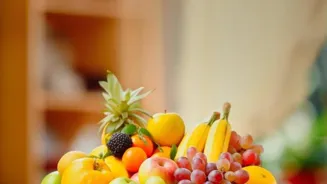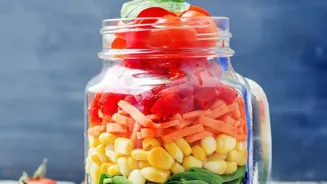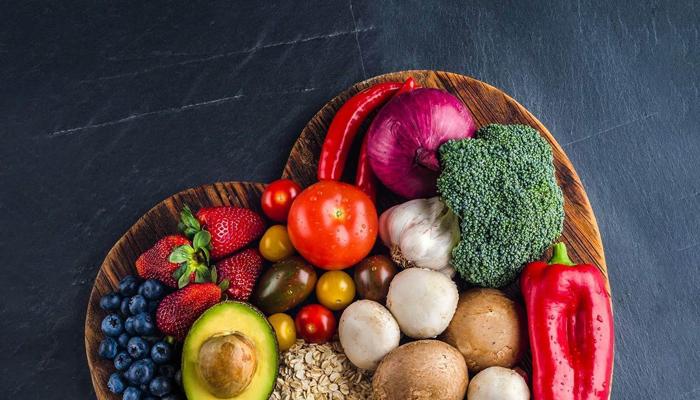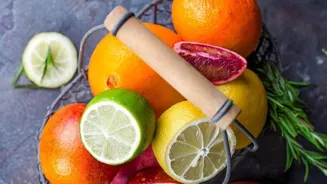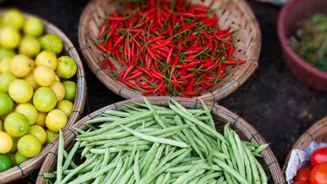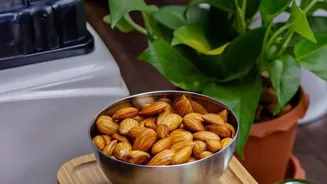Unlock the secrets of the Glycemic Index! Dive into 10 essential foods to manage blood sugar effectively. Learn more!
The Glycemic Index, or GI, is a system that ranks foods based on how quickly they cause
your blood sugar levels to rise after you eat them.
It's a valuable tool for managing blood sugar, especially for people with diabetes, but understanding it can benefit everyone looking to maintain a healthy lifestyle. It is important to note that GI should be considered with Glycemic Load (GL) to understand the overall effect on blood sugar.
Glycemic Load takes into account the quantity of carbohydrates in a serving of food. This article will cover 10 vegetarian foods and their GI values to help you make informed dietary choices.
Understanding the glycemic index scale and its impact on blood sugar levels
Firstly, let's delve into the basics. The GI scale ranges from 0 to 100. Foods with a high GI (70 or more) are digested and absorbed quickly, leading to a rapid spike in blood sugar.
Medium GI foods (56-69) cause a moderate rise, while low GI foods (55 or less) are digested and absorbed slowly, resulting in a more gradual increase in blood sugar. Several factors can influence a food's GI, including its processing method, ripeness, and the presence of fiber, fat, or protein.
Ripe fruits generally have a slightly higher GI. Cooking methods also affect the GI. For instance, boiling potatoes tends to yield a higher GI compared to baking them. Pairing high GI foods with sources of protein and fiber can help lower their overall impact on blood sugar levels.
White Rice
With a GI of around 73, white rice is considered a high GI food. It's a staple in many Indian diets, but consuming it in large quantities can lead to blood sugar spikes.
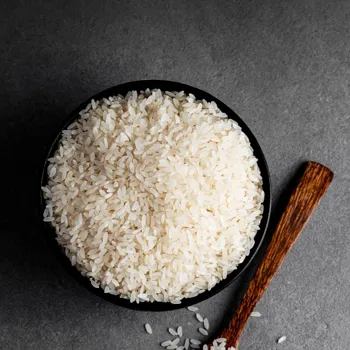
Opting for brown rice, with a GI of around 68, which is still in the medium range, but a better choice, or parboiled rice which have a lower GI, can be a good alternative.
Remember that portion control is important when eating rice, and combining it with vegetables can also help slow down the absorption of glucose.
White Bread
Similar to white rice, white bread has a high GI, typically around 75. This is because it's made from refined flour, which lacks fiber. Switching to whole wheat bread, which has a GI of around 71, or multigrain bread (around 60), can be a healthier choice.
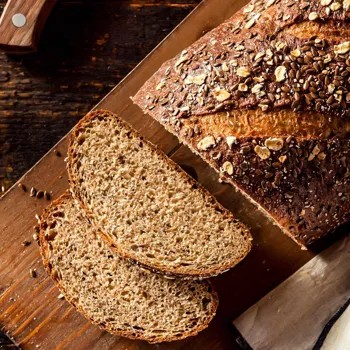
These alternatives contain more fiber, which slows down digestion and prevents rapid spikes in blood sugar. Look for bread that lists whole grains as the first ingredient.
Potatoes(boiled)
Potatoes, especially when boiled, have a high GI, ranging from 78 to 82 depending on the type. While potatoes are a good source of nutrients, it's important to consume them in moderation. Baking potatoes instead of boiling can slightly lower their GI.
Pairing potatoes with protein and fiber, like adding them to a vegetable curry, can also help mitigate their effect on blood sugar. Sweet potatoes have a lower GI than white potatoes, making them a healthier alternative.
Cornflakes
Cornflakes, being processed cereals, generally boast a high GI of around 81. Starting your day with a bowl of cornflakes might lead to a quick sugar rush, followed by a crash.
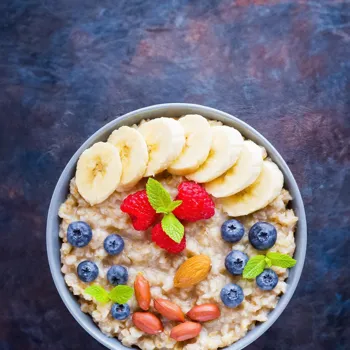
Choosing for whole grain cereals like oats, which have a much lower GI (around 55), is better to have a constant level of energy. Adding fruits and nuts to your breakfast can impart further improvements to nutritional value.
Watermelon
Watermelon has a high GI of around 76, but its Glycemic Load (GL) is low because it contains very less carbohydrate per serving. Considering its high water content, is a refreshing and healthy option during summer. However, folks managing diabetes must eat it in mindful portions.
Remember not the GI alone, but also the GL, helps understand a food's overall impact on blood sugar levels.
Bananas
The GI of bananas varies relying on their ripeness. Green bananas contain more resistant starch, giving it a low GI of about 42. As its ripeness increases, the carbs are converted to sugar, giving it a higher GI up to 62. A medium ripe banana is more wholesome and better for blood sugar.
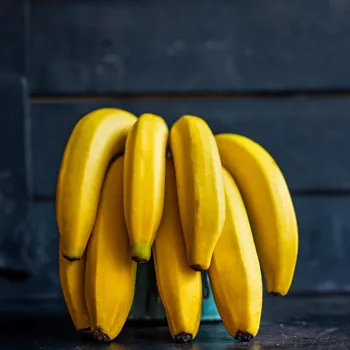
A banana can be an excellent source of energy and nutrients, especially for those who are active.
Mangoes
With a GI of around 51, mangoes are considered to have a low to medium GI. However, they're still rich in natural sugars, implying moderation is key, especially for those with diabetes. Its nutrients and antioxidants make it an excellent choice in summer.
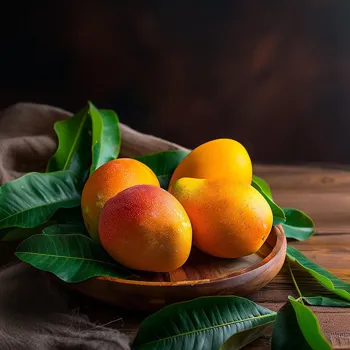
Combining mangoes with other healthy foods like nuts or yogurt can assist slow down that absorption of sugar.
Oranges
Oranges have a low GI of around 43. Making it a good choice for people concerned about their blood sugar. They are rich in vitamin C and fiber, also helps to stabilize your blood sugar levels.
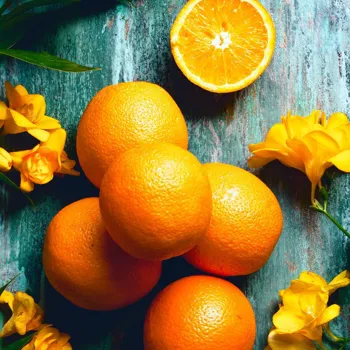
Oranges make a great addition to your diet that imparts vital nutrients without major spikes in blood sugar. Enjoying them in moderation as part of a balanced diet is an effective move.
Carrots
Raw carrots have a low GI of around 35 while boiled carrots have a higher GI of around 41. Carrots are low in calories and rich in vitamins or mineral. So have them in any way. Its high fiber content contributes to a gentle absorption of sugar.
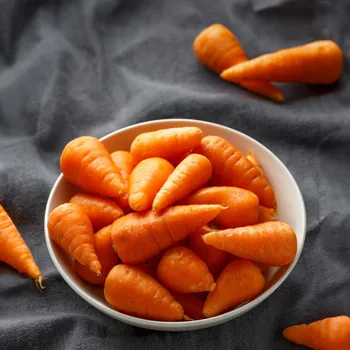
Including carrots in your meals is the correct approach to boost the consumption of nutrients.
Milk
Milk has a low GI of around 31. It is a nutritious beverage with proteins, calcium and vitamins. Therefore it makes balanced nutrition. Consumption of it affects minimal in blood. It supports overall well being. Prefer including milk in diet for getting more nutrition.

Balance blood sugar with low GI foods and portion control for health
Therefore for maintaining healthy blood sugar levels while having a balanced diet is about understanding the GI. You can lead a healthy and energetic lifestyle by making wise food picks. Bear in mind that factors like portion size and cooking methods also play a important role.
By incorporating low GI foods, managing portion sizes, and pairing foods wisely, you can create a balanced diet that fits your individual needs.
Consult healthcare pros for tailored advice on managing blood glucose with nuanced methods
Consider consulting a dietician or healthcare pro for customized advice, significantly when you have diabetes or other health conditions. A nuanced method, which includes GI, GL, and particular responses, guarantees more effective blood glucose management.
AI Generated Content. Glance/InMobi shall have no liability for the content